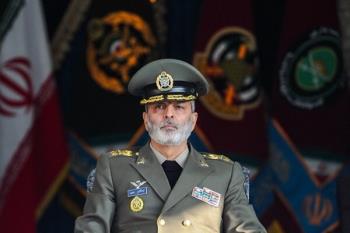Alwaght- Evaluation of previous wars and conflicts with Hezbollah and the Israeli regime’s actions regarding future wars, is one of the issues that is constantly being analyzed in Israeli research centers. In the previous war between Israel and Hezbollah, the regime was considering Hezbollah as its only opponent while in fact, there was an all-out war between the Israeli regime and Lebanon. But due to the regime’s awareness of this issue, a future war must be considered a major military confrontation between Israel and Lebanon. Also, the international community has to react quickly to this possible conflict and war.
On this basis, proposals and suggestions regarding the need for change in the structure of the Israeli army have been mentioned. These suggestions mainly focus on getting ready for a future military confrontation, because many Israelis believe a military conflict is unavoidable, whether it is against Hezbollah or the Palestinian resistance in the Gaza Strip.
The most important changes that were suggested, were towards the commandment of the Israeli army. Where Gadi Eizenkot has been elected as the chief of staff, to reinvent the military structure of the Israeli Regime. These changes are also aimed towards the regime’s military doctrine. This doctrine has been dubbed as Gideon, and was approved by Israel’s security cabinet in April. Following this doctrine, 100,000 soldiers are going to be set aside, and those who remain in the army will receive more military training, and will serve the army longer than before. Gideon doctrine also emphasizes on leaving armored brigades and artillery battalions, in favor of strengthening the intelligence services, paying attention to cyber warfare and increasing the naval power by adding drones to its system and structure. Under this plan, the Israeli regime is supposed to heavily alter and change its weaponry and ammunition. Accordingly, smart missiles will take the place of old bombs, and number of the staff of the troop training circles, is going to be reduced. In addition, 2500 of army officers are also going to be set aside, which will be repeated in the following years. By setting aside these officers and recruiting a younger generation of officers, the average age of officers who are in command of army battalions and brigades, will reduce.
Following the abovementioned scheme, the Israeli army will pay more attention to its infantry forces. Also, unlike the previous wars, instead of relying on its powerful air forces, the Israeli regime will use its infantry to infiltrate into enemy territory.
In order to achieve the desired goals, the field commander must have the authority to issue orders to the commanders in the operations room, so they can use the air-defense systems if needed. The commander of Israeli infantry forces also revealed the existence of a new military structure. Based on this system, the ground forces can benefit from the support of the robots and scanner devices that are installed on aircrafts. These robots and scanners can provide a clear image of the battlefield for the soldiers.
The implementation of such changes in the Israeli infantry forces, could accomplish the following two goals:
1. The ground troops will be able to move quickly and advance in enemy territory, in order to get rid of the missile threat that puts the Israeli home front in danger.
2. Practical implementation of the principle of deterrence by killing the combatants, and destroying the enemy infrastructures and weaponry.
The implementation of such goals in the current situation is possible only if the ground forces benefit from maneuverability and high mobility in the enemy territory.
However, this concern still exists for the Israeli officials that maybe Hezbollah is considering to start a war in the north of the occupied territories. Some Israeli sources have stated that there have been some changes in the policies of the Lebanese resistance which have been described as Breaking the Silence by Seyyed Hassan Nasrallah. Thus, it is clear that there is no immediate and tangible threat from Hezbollah for the Israeli regime, but worries and concerns still remain.



























